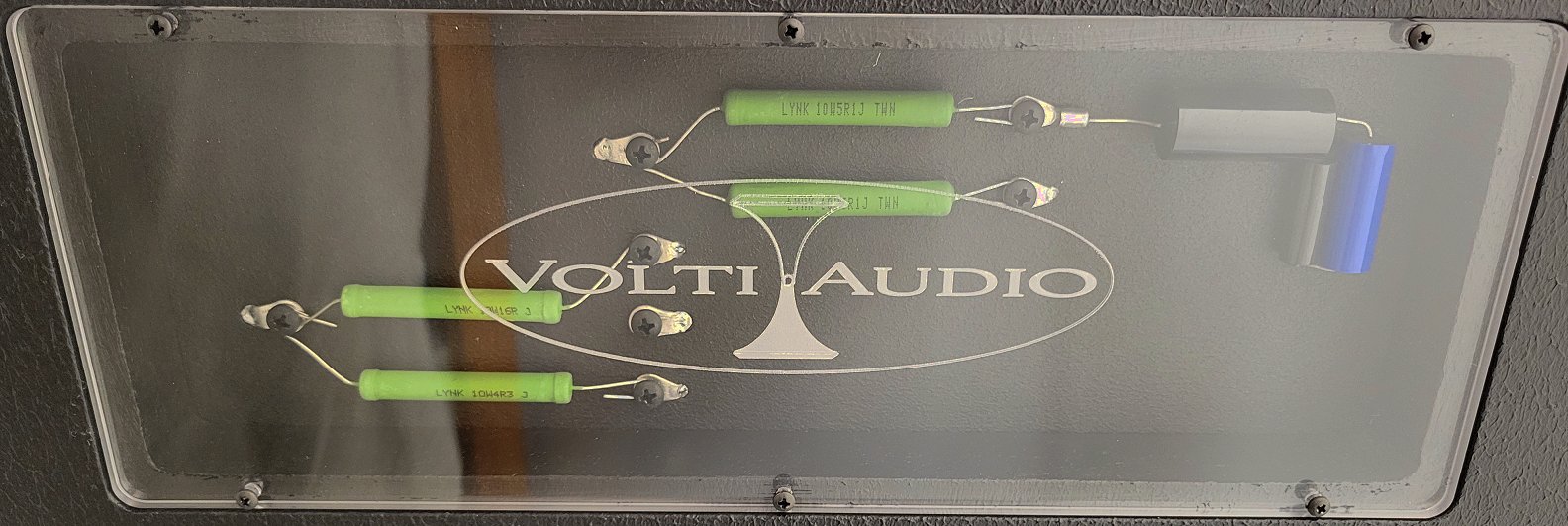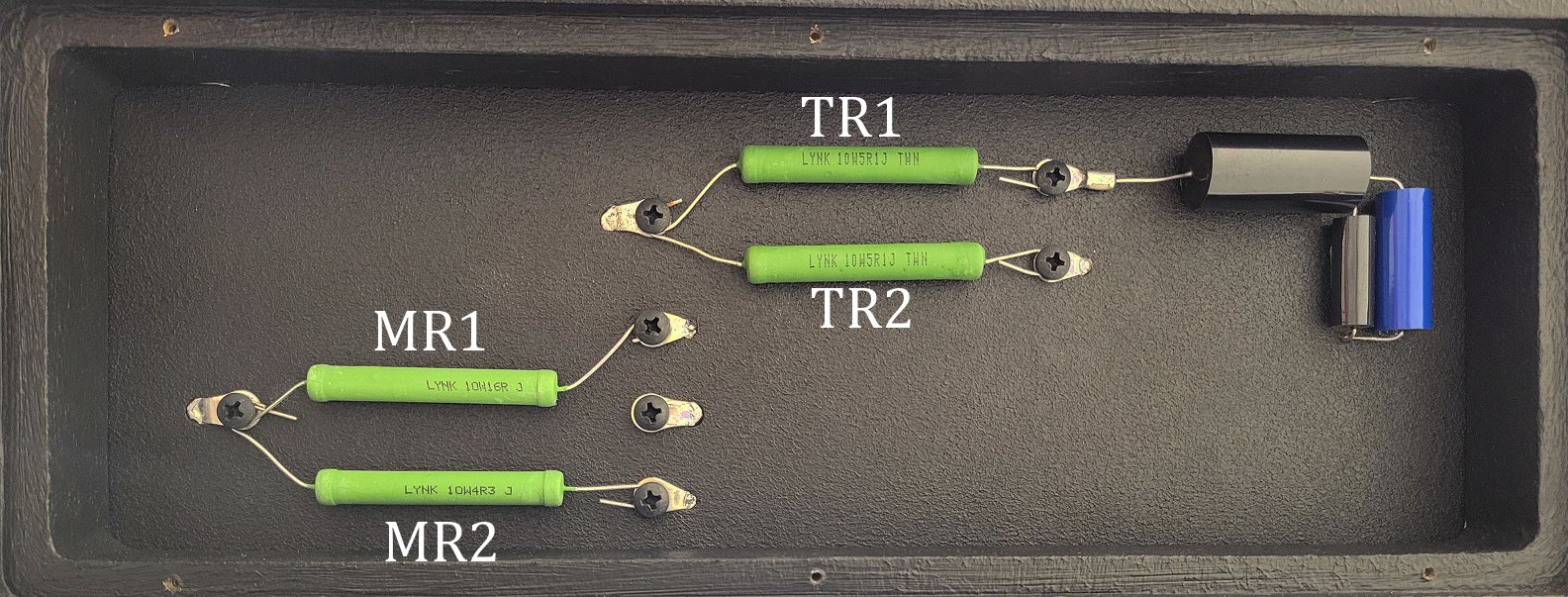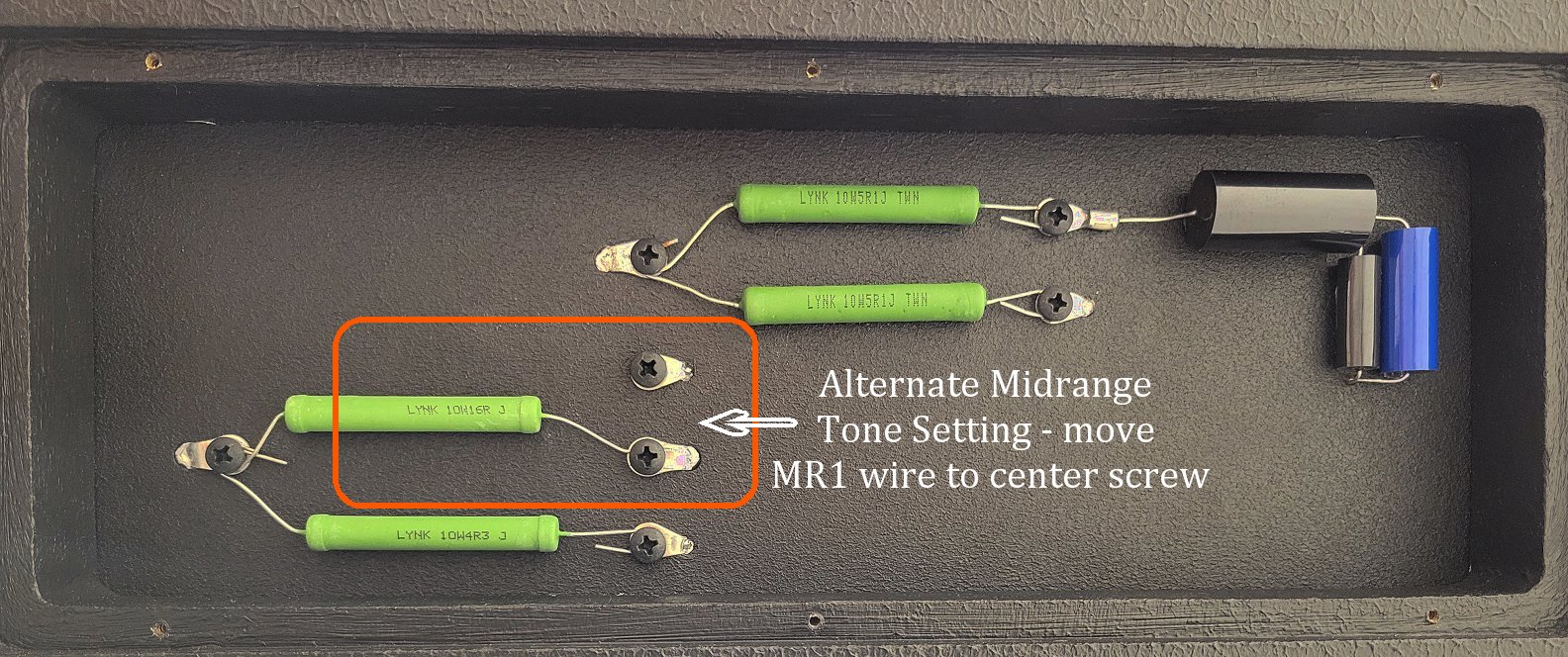Rival Crossover Adjustments
The crossovers in the Rival loudspeakers are adjustable. You can change the output level of the midrange and tweeter independently from the woofer output, providing flexibility in the overall voicing of the speaker. This is helpful to compensate for room variations, synergy with the electronics, or for simply tuning the system to one’s taste. It’s a feature that my customers tell me they really appreciate having. Why don’t all speakers offer this?
How To Make The Adjustments
Remove the cover from the top/back of the speaker – use a #1 phillips bit screwdriver, and please be careful not to scratch the cover. When re-installing the screws, be careful not to overtighten.


You can adjust the output level of the midrange and tweeter in relation to the woofer (which always runs full output) by changing resistors in the crossover. Note the four resistors labeled in the photo above:
TR1 – Tweeter Primary
TR2 – Tweeter Shunt
MR1 – Midrange Primary
MR2 – Midrange Shunt
Here’s a closeup photo of a resistor

Nomenclature = “LYNK” is the brand – “10W” means 10 watt and “5R1J” means it is a 5.1ohm resistor. A 16ohm resistor would have 16R. The 5R1, 16R, etc… is the only part that you need to identify if/when you replace any of the resistors.
We refer to the resistors simply as four numbers, from top to bottom, corresponding to the tweeter and midrange resistor locations shown in the photo above.
Here are the factory installed resistors from top to bottom:
5.1
5.1
16
4.3
The top two are for the tweeter TR1 and TR2 and the bottom two numbers are for the midrange MR1 and MR2
You can raise or lower the output level of the tweeter or midrange by replacing the factory resistors with other combinations, using the chart below.
CHART
Tweeter Attenuation
-1db 0 +1db
TR1 5.1 5.1 5.1
TR2 3.9 5.1 6.2
Midrange Attenuation
-1db 0 +1db
MR1 16 16 16
MR2 3.9 4.3 5.1
Note the factory settings are highlighted in GREEN and shown as a ‘zero’ point. Note that the zero point is not really ‘0 db’, it is a starting point to reference the other attenuation options.
If you want to raise the output level of the tweeter by one decibel, you would replace TR2 5.1 with a 6.2. the new set would be:
5.1
6.2
16
4.3
Resistors are included with your rivals to allow for all combinations shown in the chart
Other resistor combinations are available to increase or reduce the output of the midrange and tweeter to a greater degree
Note that the wires of the resistors are simply bent and shaped so that they make contact with the termination on the board, held in place by a screw. It is important that the wires make good contact with the termination for good signal transfer. We considered using spade connectors installed on the wire ends of the resistors to simplify this process, but chose instead to keep the connection simpler for optimum signal transfer. We know it’s a bit crude, but it really is the best connection we can make for a part that is changeable.
Midrange Tone:
You can change the tone of the midrange by simply moving the wire on MR1 from the top screw to the middle screw as shown in the photo below. The factory setting is with the MR1 wire connected to the top screw.

This alternate setting will increase the upper midrange slightly, providing a bit more clarity or sharpness to the midrange tone

Don’t want to be bothered? No problem, just leave the factory settings as they are and enjoy!
You won’t be disappointed, we promise. New Rival speakers sound wonderful as they are, direct from the factory. During the development, there was serious consideration given to NOT providing these adjustments due to the fact that it can turn some customers off. If the adjustments are really too much to deal with, we suggest putting it out of your mind and pretend you’ve received these fine speakers that do not offer, nor require crossover adjustments. Then enjoy the heck out of them just the way they are!
